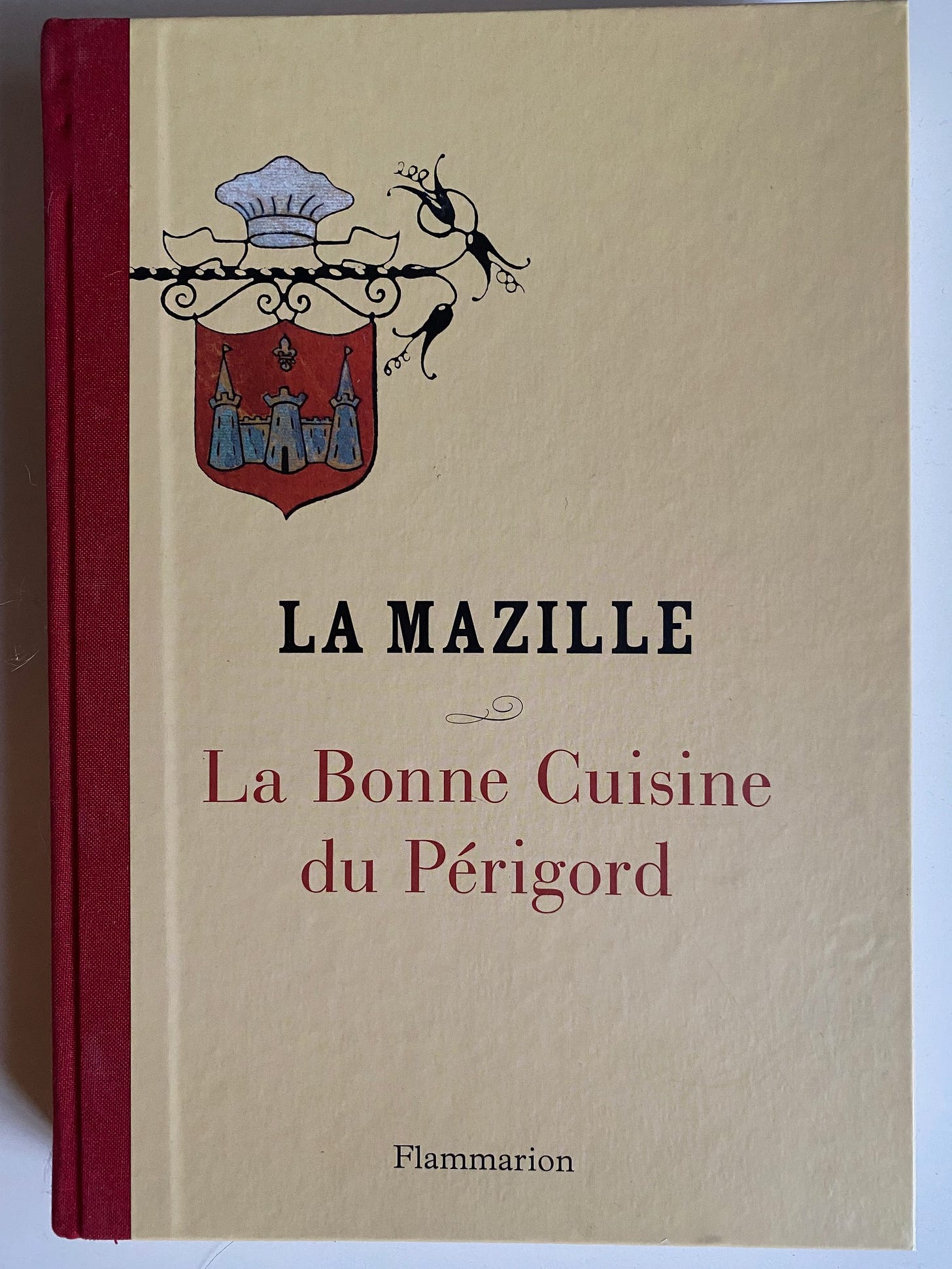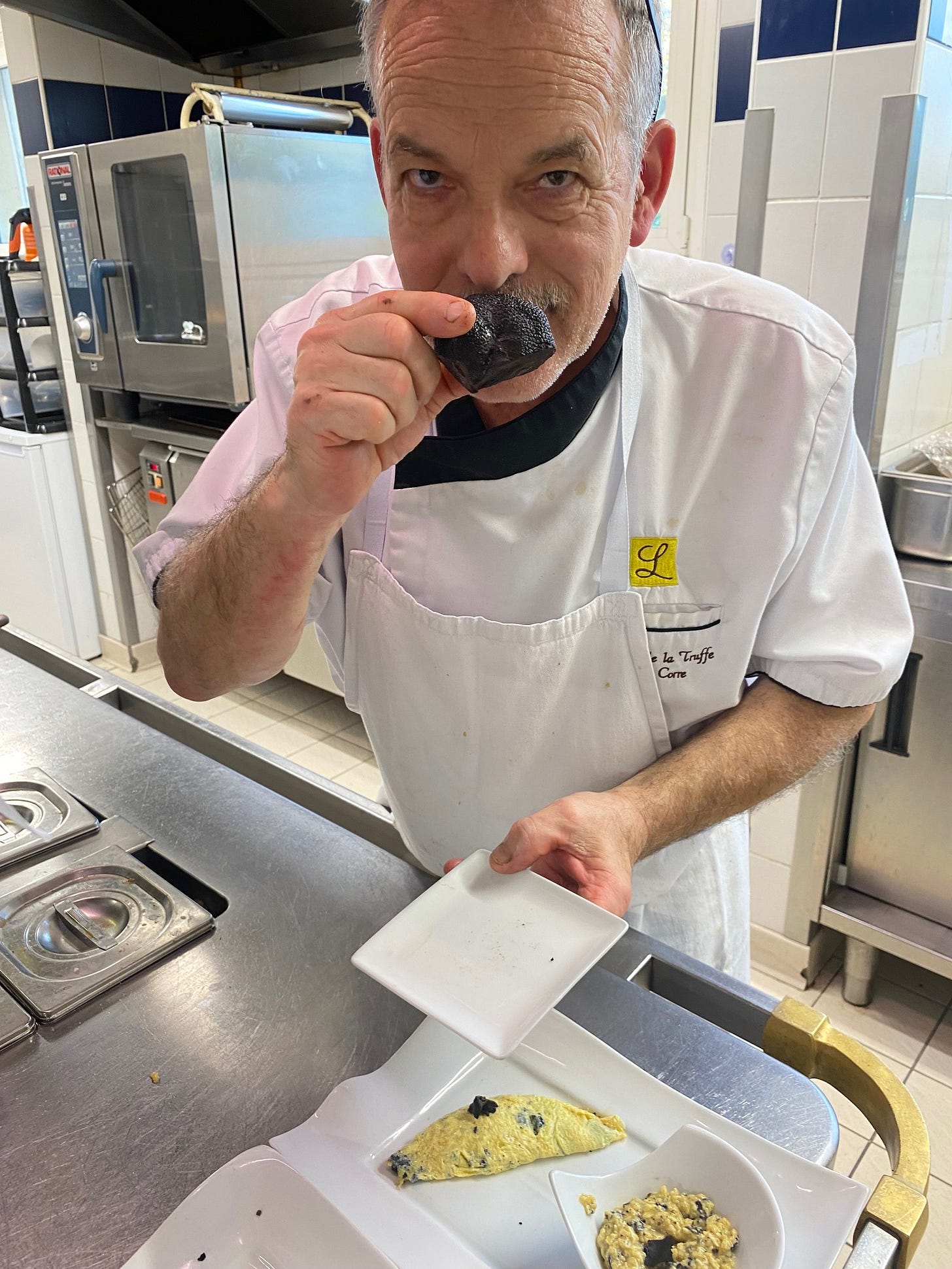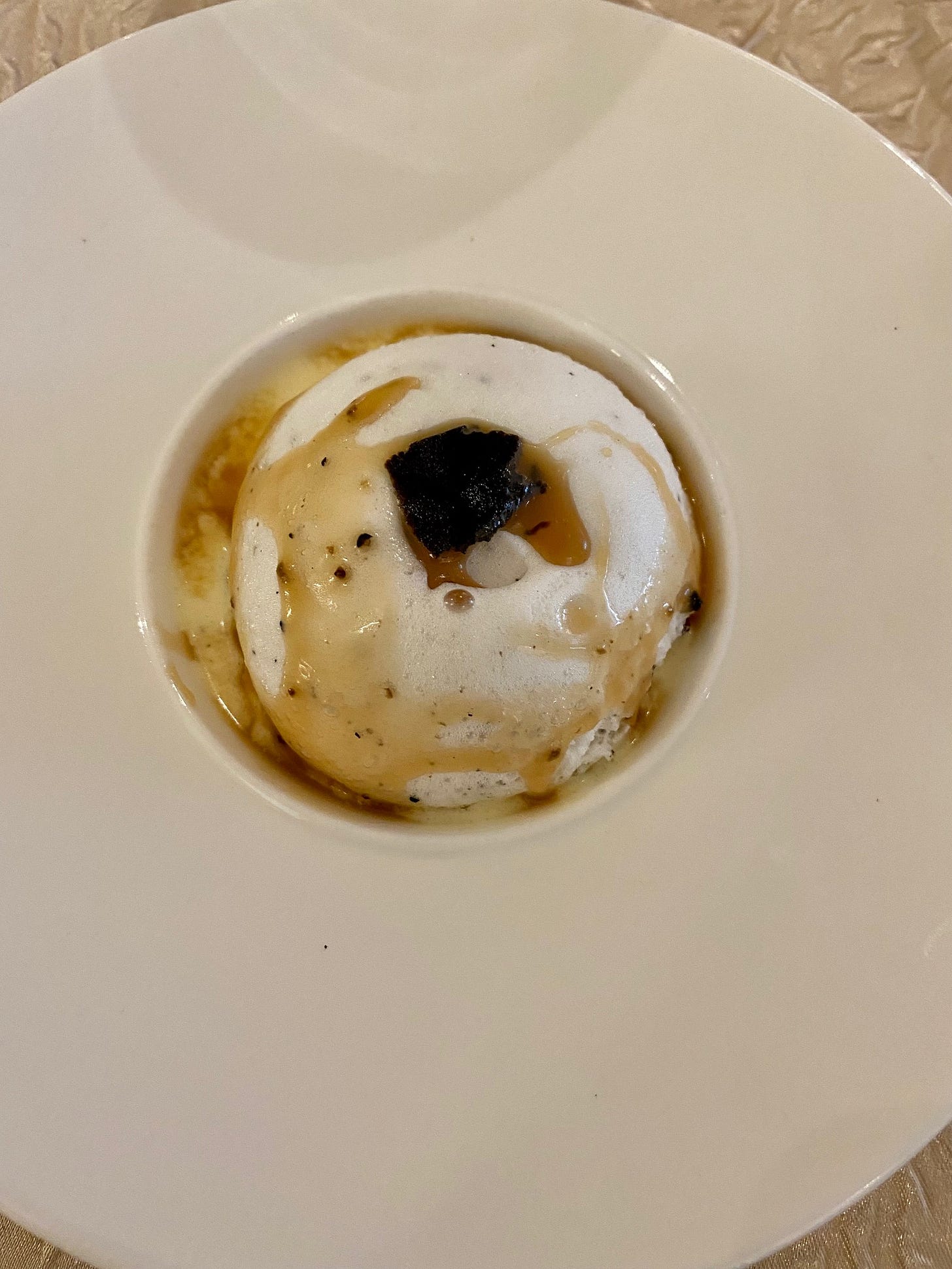With fairy-tale castles dotting vine-covered hills and welcoming villages that invite you to stroll through pretty cobblestoned streets, Dordogne is one of France’s most attractive travel destinations and a place that will always be very dear to my heart. Located in Nouvelle-Aquitaine, the department owes its name to the main river that intersects it. This idyllic part of the France where winters are mild and life is good, is also known as ‘le Périgord’ and is divided into four territories, each named after a color: Vert to the north, Blanc at its center, Pourpre to the south and Noir to the east. Each area has its own unique appeal, yet they are all connected by their heritage and culinary traditions.
Though Périgord Pourpre to the south (purple refers to the color of the vineyards in autumn and the skin of the grapes) is where I spend my summers (I am a huge fan of Bergerac/Duras wines), come wintertime, Périgord Noir, to the east of the department, is nothing short of a culinary land of plenty. You see, it is in this region where Périgord’s coveted winter truffles are harvested from the beginning of December until the end of February. Noir (black), of course, refers to the color of the truffles.
With winter at our doorstep and the holidays right around the corner, I thought it would be a good time to write about Périgord’s truffes noires.
I am not the only one who is slightly infatuated with the famed Tuber melanosporum. They have been revered by renowned writers and gastronomes such as Brillat-Savarin who called it “the diamond of the art of cookery” and Curnonsky who poetically described it as “the fragrant soul of the Périgord.” In his Grand Dictionnaire de Cuisine, published posthumously in 1873, Alexandre Dumas tells us that his recipe for ‘chapon aux truffes’ calls for “approximately a kilo” of these beautiful truffles. Impressionist painter Claude Monet loved them, too.
There’s no shortage of legends inspired by the sought-after fungus either. In fact, it was said that Napoleon II was born exactly nine months after his father was gifted a large bag of truffles from Sarlat-la-Canéda.
Though truffles were already prized in antiquity for their medicinal and aphrodisiac properties, la truffe noire did not make its appearance in French cuisine until the 16th century when it was introduced to royal tables by Francis I. By 1763, Périgord truffles were hailed the best of their kind in Diderot and d’Alembert’s Encyclopédie, a 17-volume reference work emblematic of the Age of Enlightenment. Harvests boomed in the last quarter of the 19th century when the grounds of vineyards destroyed by the phylloxera plague were used to cultivate truffle trees (mainly oak and hazelnut), but by the early 20th century production fell drastically as a result of the war and rural exodus. As of the 1960s, production increased once again with new cultivation methods based on scientific research. Today, approximately four to nine tons of truffles are produced annually in Périgord.
But where to go and what to do if you really want to taste and experience the region’s most coveted culinary treasure? (And yes, truffles aren’t just savored, they’re experienced with all the senses.) Here is a selection of a few of my personal favorites.
Markets
During truffle season special truffle markets are held nearly every day of the week in towns throughout the region, including Sarlat, Périgueux, Bergerac and of course, Sorges, the region’s truffle capital. For a complete line-up, have a look here. Do bear in mind that carefully curated truffles come with a hefty price tag ranging between €500 and €800 per kilo!
Truffle festival
Held in January, Sarlat’s gastronomic two-day festival, la Fête de la Truffe, deliciously honors black truffles with everything from cooking demonstrations to a truffle market on Place de la Liberté.
Ecomusée de la Truffe in Sorges
Housed in an 18th-century farmhouse located at the entrance of the village, the museum is a good place to start if you’re a black truffle novice. The ground floor is home to a shop selling truffle products and books, and the museum is upstairs.
Side note: It was here that I purchased my copy of La Bonne Cuisine du Périgord, the region’s culinary bible. It was written by Andrée Maze (pen name ‘La Mazille’), one of the most influential writers on Périgord cuisine, quoted and loved by the likes of Elizabeth David and Paula Wolfert. She is a huge source of inspiration for many chefs in southwest France, and there is even a book fair held every two years in Périgueux named after her.
Domaine du Grand Merlhiot
If you’re looking for a fine place to stay where you can really experience truffles, a place where people are truly passionate about promoting the regional diamond, head to Savignac-les-Églises where you’ll find Domaine du Grand Merlhiot. This sprawling estate with beautiful landscaped parks boasts approximately fifty hectares of organic truffle fields. Shortly before the opening late last year, I met with owners Olivier and Karine Leserne.
The couple showed me the three guest bedrooms and took me on a tour of the property and its wooded surroundings. Not only can you spend the night here and enjoy wine tastings and truffle dishes prepared by Karine, but you can also go hunting for your own truffles.
Auberge de la Truffe
Located in the truffle capital Sorges and opened in 1982 by truffle lover Jacqueline Leymarie (now owned by Catherine and Laurent Moisan), Auberge de la Truffe offers you the complete package. There are twenty comfortable rooms at the three-star hotel, but the best part is without doubt its exceptional restaurant, helmed by truffle king (and one of the nicest and most charming chefs I have ever met) Pierre Corre.
Corre trained with some of France’s top chefs, including Alain Ducasse and Georges Blanc. He’s been working at the restaurant since its inception, and his authentic truffle menus are lavish, well orchestrated and a true reflection of the best that the region has to offer.
I would certainly classify this as fine dining – perhaps one of the best culinary experiences the region has to offer – yet the atmosphere is friendly, welcoming and low-key, as though you’re eating at a friend’s place. The prices are also very modest, if you consider that the €119 truffle menu includes 50 grams of truffle, and that Pierre uses 11 grams in his must-try three-egg omelet (his signature dish, and yes, the best omelet ever to cross my lips).
I dined at Auberge de la Truffe last November during a press trip to the region organized for me by Dordogne-Périgord press officer Micheline Morissonneau. With every dish of the menu, Pierre would call me into the kitchen to show me what he was making.
I saw him prepare his omelet, brouillade and even a truffled île flottante.
Auberge de la Truffe organizes special truffle weekends which include full board, a truffle dinner, visit to the museum and much more. You’ll even accompany Pierre on a visit to a regional market and take a cooking lesson with him. At €395 per person, a bargain and a highly recommended experience if you’ve never been to the region, love truffles or are eager to learn more.
Though I didn’t actually cook with Pierre, he did give me eight of his recipes. This Friday I will be sharing one of them with exclusive subscribers and posting a video of Pierre at work!
See you then!











